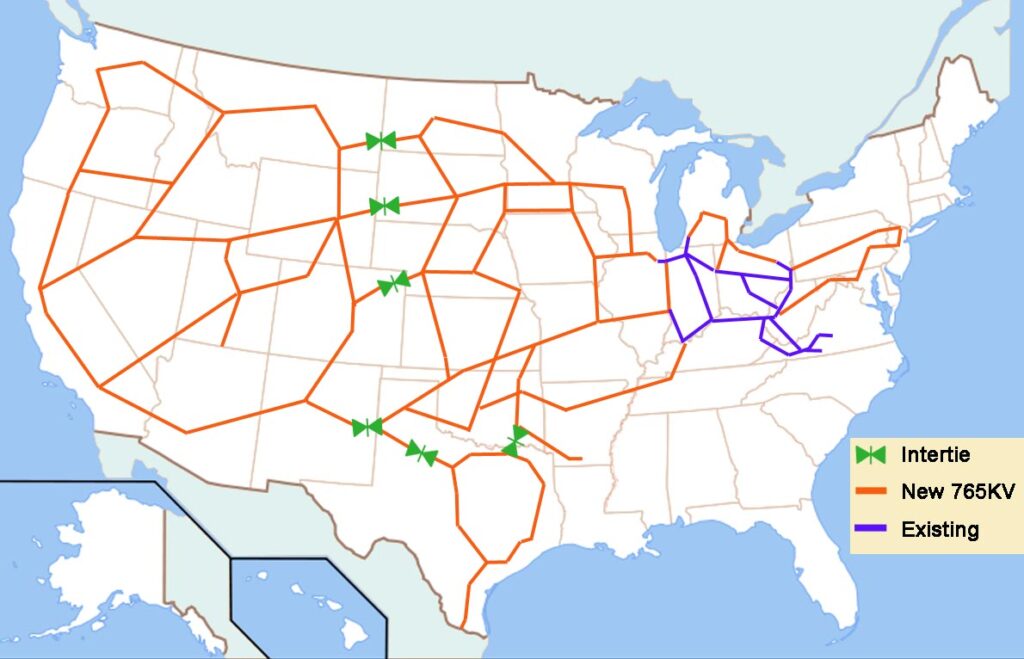The Grid

Grid expansion in the United States has been in a lull for several decades but with a need for renewable energy there is a renewed focus. Most of the energy loss between an energy plant and your house is actually in local lines and relatively small. High voltage lines can carry energy over 1,000 miles with relatively low losses. High voltage direct current lines lose about 5.6% of power per 1,000 miles meaning you could take power coast to coast across the United States and retain about 84% of the generated amount.
If we desire to convert more transportation, industry, and heating to electric and renewables a much beefier and smarter grid will be necessary. Concepts for supergrids across the United States, Europe/North Africa, and other areas have been proposed. The current grid has an eastern connection, a western connection and Texas, but higher capacity lines will need to be installed to truly share energy around the lower 48 states.
American Electric Power (AEP) proposed a 400 GW in 2007 designed to enable a grid with 20% wind energy at a capital cost of $60 Billion. [1]
The cost of grid expansion is relatively nominal compared to the capital cost of renewable energy generation.

A 2016 paper in Nature Climate Change Journal [2] and described in more layman’s terms in the Washington Post [3] further analyzed the idea of an interstate style supergrid designed to share energy across the lower 48 states using an underground high voltage system. The paper analyzes weather data and visualizes using natural gas plants as a backup power system. The authors were employed by the National Ocean and Atmospheric Administration (NOAA) at the time of publishing and concludes that spreading energy generation over a large area will be a great benefit to diminishing the effect of variability in wind and solar generation.
Weather is always moving through, driven by uneven heating of the Earth by the sun. High solar and wind energy areas are as predictable as the geography of the area. A supergrid system combined with energy storage and fossil fuel or nuclear backup can make renewable energy quite predictable.
References
- American Energy Producers (AEP) “Interstate Transmission Vision for Wind Integration” Electricity Today. September 2007. Pages 30-37
MacDonald, A., Clack, C., Alexander, A., Dunbar, A., Wilczak, J., Xie, Y. “Future Cost-Competitive Electricity Systems and Their Impact on US CO2 Emissions” Nature Climate Change. Volume 6. May 2016
MacDonald, Alexander. “Save the climate and protect America: Build an ‘underground energy interstate’ now” Washington Post. June 2, 2016. https://www.washingtonpost.com/news/capital-weather-gang/wp/2016/06/02/save-the-climate-and-protect-america-build-an-underground-energy-interstate-now/. Accessed May 5, 2021